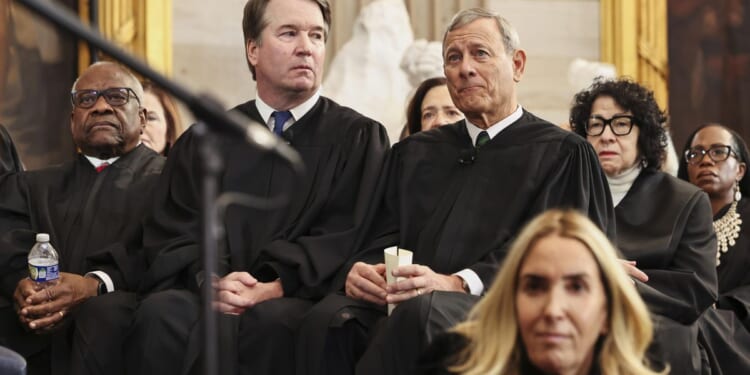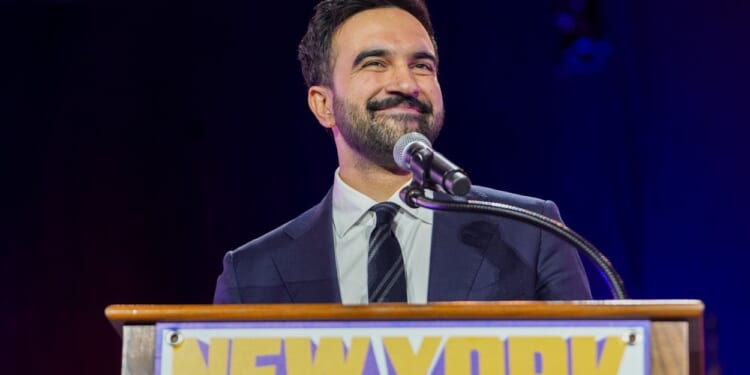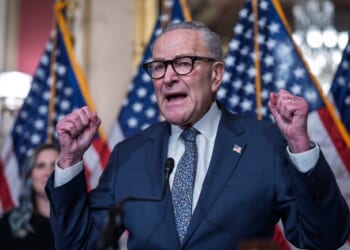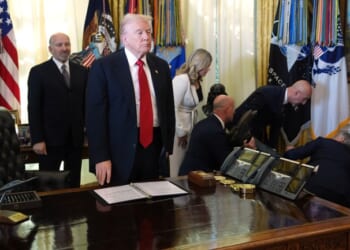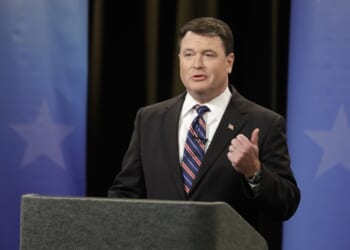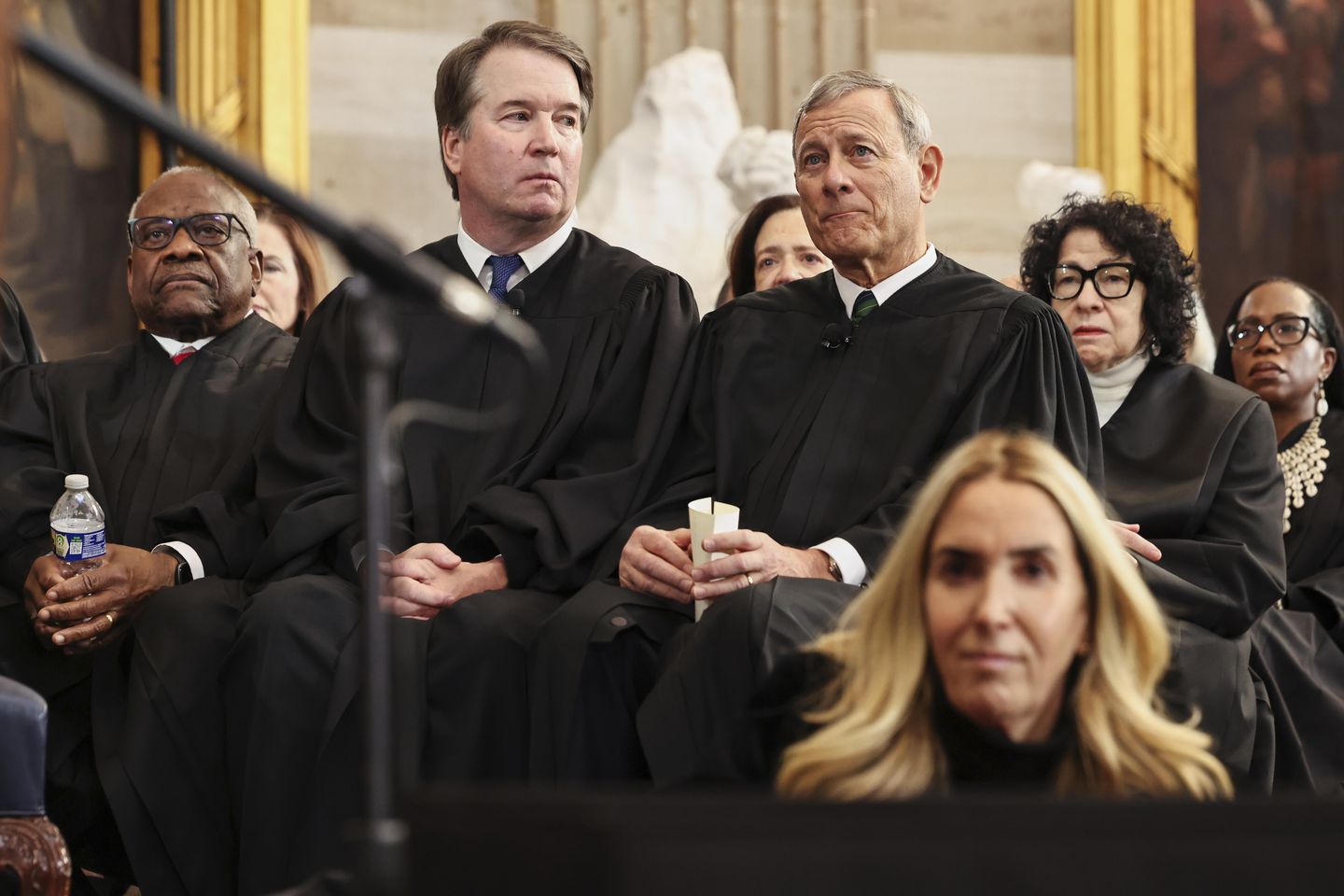
President Trump has been on a winning streak at the Supreme Court, though the reason is often unclear. Here’s what you need to know about Justice Kavanaugh’s role in explaining emergency docket rulings:
The explanation gap
Supreme Court leaves lower judges guessing with terse orders:
- Trump has prevailed in the majority of the court’s emergency docket rulings on challenges to his executive actions
- As is their practice, the justices have usually issued only a terse paragraph or two lifting lower court blocks on Trump initiatives
- Their lack of explanation leaves the public and lower court judges, in particular, to wonder about the legal reasoning
- Justice Brett M. Kavanaugh has emerged as a kind of court interpreter
The Kavanaugh explanations
Trump appointee provides reasoning other justices don’t:
- In early September, the high court set aside a district judge’s ruling that immigration agents were acting unconstitutionally in some of their arrests in Los Angeles
- Of the six Republican-appointed justices, only Kavanaugh wrote an opinion explaining the decision
- He said U.S. District Judge Maame Frimpong likely erred in her ruling for several reasons and that ethnicity, language and jobs can be factors in an immigration arrest
- “Under this court’s precedents, not to mention common sense, those circumstances taken together can constitute at least reasonable suspicion of illegal presence in the United States,” he wrote
The pattern of guidance
Kavanaugh repeatedly clarifies court’s interim rulings:
- In August, the high court allowed Mississippi’s restrictions on youth access to social media to remain in effect, and Kavanaugh wrote to clarify that the law would eventually be declared unconstitutional
- In a July case regarding Trump’s firing powers, Kavanaugh said there was a “fair prospect” that the court would overrule precedent, so letting him go ahead with the firings while the cases proceeded made sense
- Otherwise, “we may leave the lower courts and affected parties with extended uncertainty and confusion about the status of the precedent in question,” the justice said
- That concern has become an issue amid the wave of Trump-related cases speeding their way to the justices
The Trump winning streak
President prevails in overwhelming majority of emergency cases:
- Trump is doing remarkably well, with the justices siding with his position in more than 90% of the emergency docket rulings
- On Friday, the justices allowed Trump to block $4 billion in foreign aid spending, effectively killing money that Congress had approved
- The court’s majority made clear in an unsigned order that they were not ruling on the merits of the case, but the effect was a victory for the president
- Legal experts say part of Trump’s winning streak stems from a judicious selection of cases to rush to the justices
The emergency docket growth
Volume of interim rulings has increased dramatically:
- Last year, the justices decided 44 issues on the emergency posture
- As of early August, they had decided 113, according to SCOTUSblog
- The cases reach the justices on an interim posture, usually after a lower court judge has issued a preliminary injunction blocking the president’s action
- They do not have full briefings or oral arguments, and the court usually dispenses with them in brief orders
The lower court frustration
Judges say they need better guidance from high court:
- “Judges in the trenches need and deserve well-reasoned, bright-line guidance,” one judge told NBC News
- “Too often today, sweeping rulings arrive with breathtaking speed but minimal explanation, stripped of the rigor that full briefing and argument provide”
- NBC said that 10 of the 12 judges with whom it spoke said the lack of explanation in interim docket rulings is a problem
- U.S. District Judge Tanya Chutkan declined to apply the high court’s ruling on speedy removals to another case, saying the justices didn’t provide enough explanation
The liberal justices’ criticism
Democratic appointees call for better explanations:
- Justice Elena Kagan said in remarks to a judicial conference in July that the court’s rulings needed better explanation
- “As we have done more and more on this emergency docket, there becomes a real responsibility that I think we didn’t recognize when we first started down this road to explain things better,” she said
- In the foreign aid case, Kagan castigated her colleagues, saying the case was “uncharted territory,” so the justices shouldn’t have made such a momentous ruling on the emergency docket
- “The standard for granting emergency relief is supposed to be stringent. The Executive has not come close to meeting it here,” wrote Kagan, an Obama appointee
The Kavanaugh defense
Justice explains challenges of writing interim opinions:
- Speaking at a judicial conference, Kavanaugh pointed out that the cases on the emergency docket are preliminary
- “So there could be a risk in writing the opinion, of lock-in effect, of making a snap judgment and putting it in writing, in a written opinion that’s not going to reflect the final view,” said Kavanaugh, a Trump appointee
- Kavanaugh said at a conference in September that the justices don’t have a choice about hearing emergency cases
- “We would be happy if we didn’t receive those applications, but once we receive them, we have to deal with them,” he said
The terminology debate
Even the docket’s name has become controversial:
- Kavanaugh has said he favors the “interim” docket
- In 2015, a legal scholar dubbed it the “shadow docket,” highlighting behind-the-scenes work
- Kagan has used the term “shadow” docket but cautioned against it this summer, preferring the “emergency” docket
- “’Shadow docket’ really does suggest this is just a terrible thing, generally, and it is not that. Sometimes we have to act on the ’shadow docket,’” she said
Read more:
• Brett Kavanaugh: Supreme Court justice becomes high court’s explainer-in-chief on Trump cases
This article is written with the assistance of generative artificial intelligence based solely on Washington Times original reporting and wire services. For more information, please read our AI policy or contact Ann Wog, Managing Editor for Digital, at awog@washingtontimes.com
The Washington Times AI Ethics Newsroom Committee can be reached at aispotlight@washingtontimes.com.

